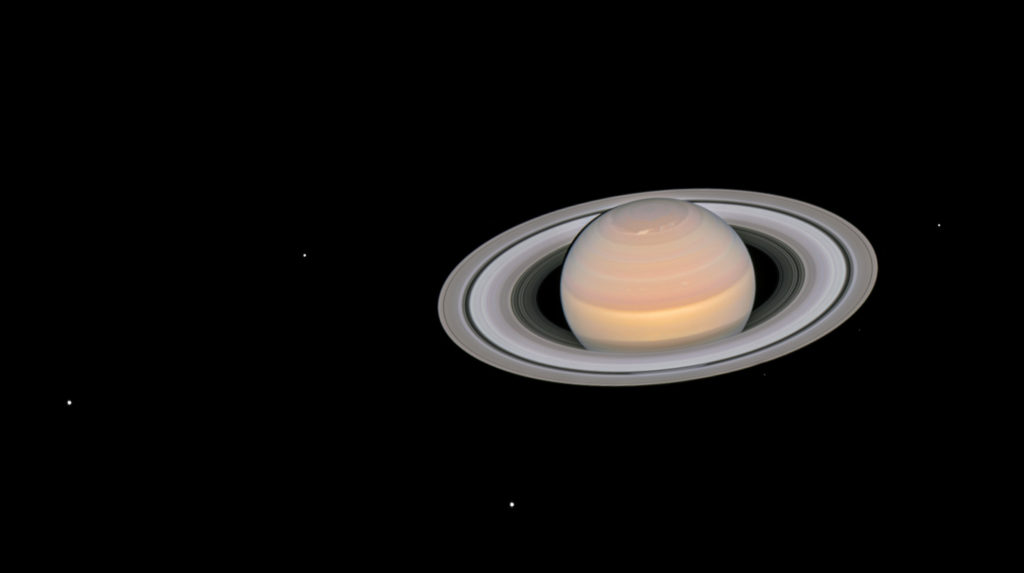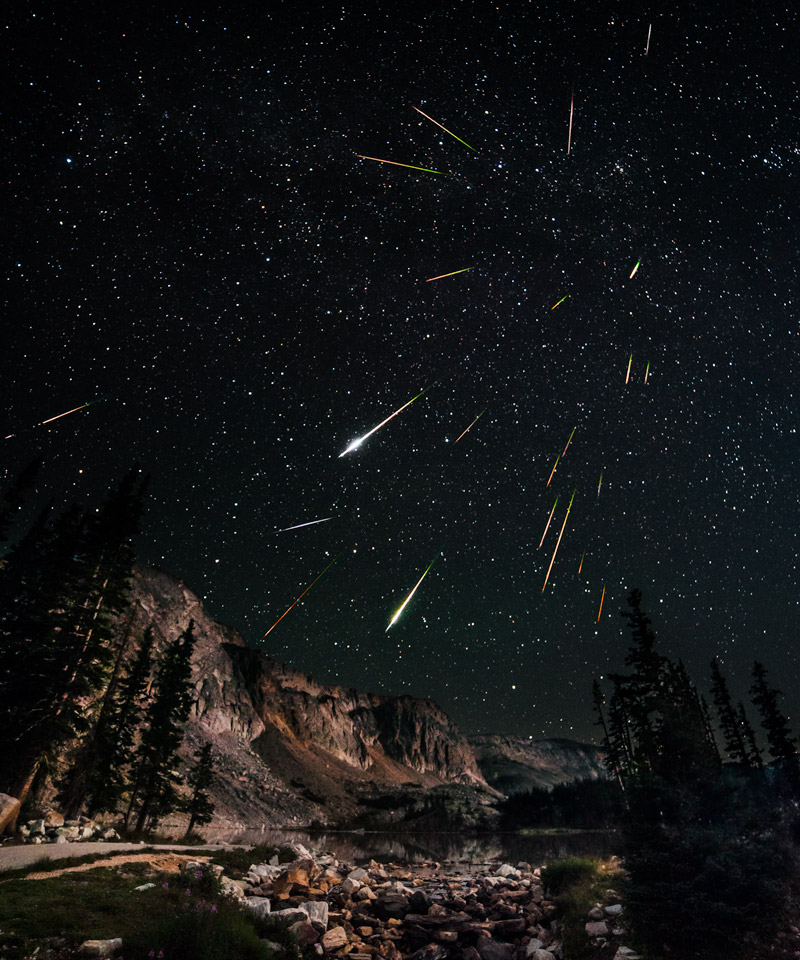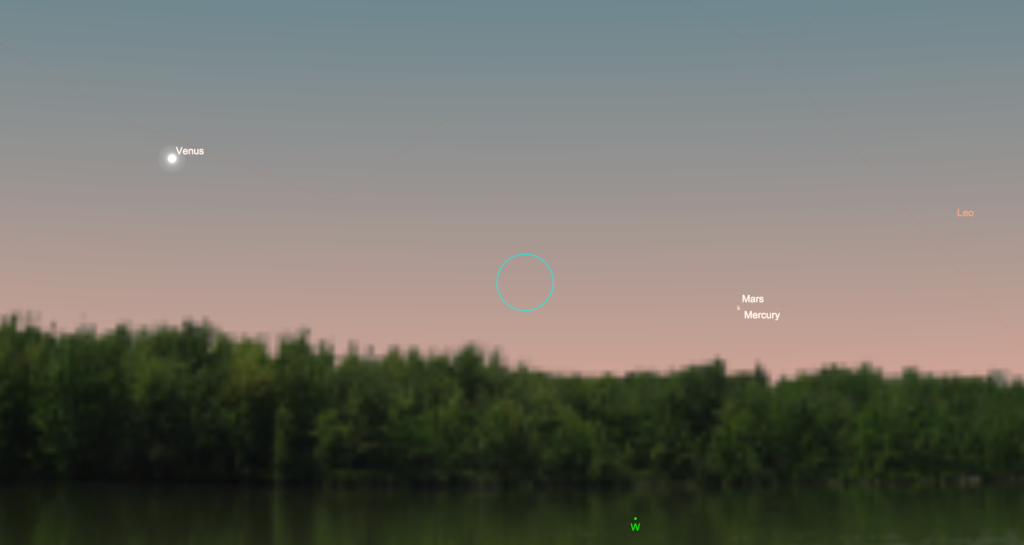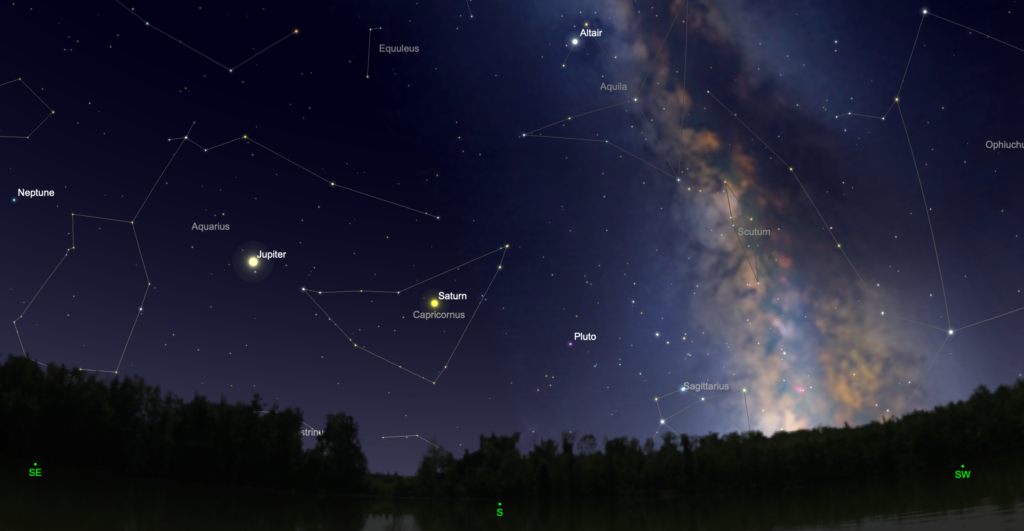
It’s an extra good month for stargazing! Both Jupiter and Saturn reach opposition in August and make their best apparitions of the year. The grand Perseid meteor shower peaks under nearly moonless conditions, ideal for some northern summer stargazing under the Milky Way. Venus hangs low and bright over the northwestern horizon after sunset, and tiny Mercury makes a very close approach to Mars on the 18th in the same part of the sky. Early risers get to see a slender crescent Moon tangled in the stars of the Pleiades and Hyades star clusters in the pre-dawn sky. Here’s what to see in the night sky this month.
1-2 August 2021. Saturn arrives at opposition in the constellation Capricornus as it makes its closest approach to Earth this year. The planet lies well south along the ecliptic, so northerner observers need steady air to get good views of its magnificent ring system. But it’s worth the effort: Saturn is one of the most beautiful objects to observe in a telescope. Our Saturn Observing Guide will help you get a good view of this lovely celestial object and understand what to look for.

2 August. Look to the northeastern horizon before dawn to see a waning crescent Moon rise with the Pleiades and Hyades star clusters, both part of the constellation Taurus.
6 August. A wafer-thin crescent Moon lies about three finger-widths from the bright star Pollux just over the east north-eastern horizon before the Sun comes up.
8 August. New Moon, 13:50 UT
10 August. The Moon has rounded the Earth once again and now grows thicker and brighter. Today its waxing crescent lies about 5o from brilliant Venus over the northwestern horizon as twilight falls.

11-12 August. The Perseid meteor shower peaks in the early-morning hours. This is the finest meteor shower of the year for northern stargazers, with 40-60 meteors per hour visible at the peak in the hours before dawn on August 13. Once called the Tears of St. Lawrence, this meteor shower occurs as the Earth moves through a stream of debris left by Comet Swift-Tuttle. This year the Moon is not quite at first quarter, so it sets and stays out of the way for the best part of the shower. You get the best view after midnight on August 11 and into the morning of the 12th. Stay away from city lights, if you can, and you will be rewarded with a bright meteor every few minutes or so. The Perseids are also a long-lasting show, running from July 17 through August 25. So if you miss the peak, you still have a good chance to see some meteors.
15 August. First Quarter Moon, 15:20 UT
16 August. The newly gibbous Moon lies about 4o from the bright red-orange star Antares in the constellation Scorpius along the southern ecliptic.

18 August. Mars passes as close as 0.1 degree from Mercury. The pair is visible in the daylight sky, which makes it an ideal target for a go-to telescope with a high magnification eyepiece. Or wait until just after sunset when the two planets are over the western horizon. A pair of binoculars can pull them out of the twilight sky. Much brighter Venus lies about 20o away. NOTE – When attempting to observe Mars and Mercury in daylight, make sure you do not accidentally glimpse the Sun!

19 August. Jupiter reaches opposition, making its closest approach to Earth this year. It lies in eastern Capricornus just over the border from Aquarius. At magnitude -2.9, the planet outshines everything else in the night sky except for the Moon and Venus. Our Jupiter Observing Guide helps you get the best view in binoculars and a telescope, and helps you understand a little more about the solar system’s biggest planet.
22 August. Full Moon, 12:02 UT
30 August. Last Quarter Moon, 07:13 UT